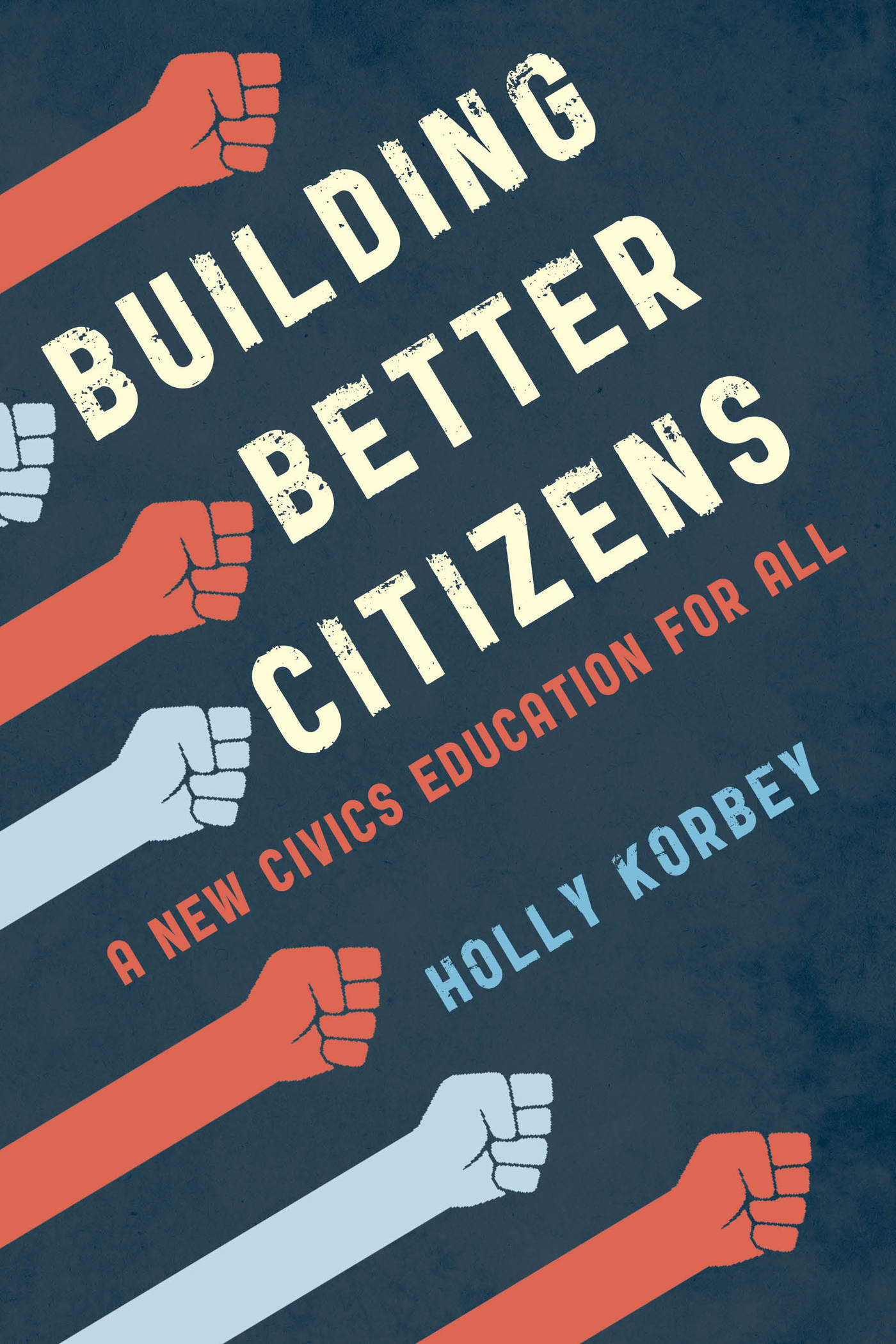Building Better Citizens
Building Better Citizens
A New Civics Education for All
Holly Korbey
ROWMAN & LITTLEFIELD
Lanham Boulder New York London
Published by Rowman & Littlefield
An imprint of The Rowman & Littlefield Publishing Group, Inc.
4501 Forbes Boulevard, Suite 200, Lanham, Maryland 20706
www.rowman.com
6 Tinworth Street, London SE11 5AL
Copyright 2019 by Holly Korbey
All rights reserved. No part of this book may be reproduced in any form or by any electronic or mechanical means, including information storage and retrieval systems, without written permission from the publisher, except by a reviewer who may quote passages in a review.
British Library Cataloguing in Publication Information Available
Library of Congress Control Number: 2019949767
 TM The paper used in this publication meets the minimum requirements of American National Standard for Information Sciences Permanence of Paper for Printed Library Materials, ANSI/NISO Z39.48-1992.
TM The paper used in this publication meets the minimum requirements of American National Standard for Information Sciences Permanence of Paper for Printed Library Materials, ANSI/NISO Z39.48-1992.
O, let America be America again
The land that never has been yet
And yet must bethe land where every man is free.
Langston Hughes, Let America Be America Again
I want a democracy so compelling even the children will want to try it.
John Harris Loflin
Acknowledgments
Though my name appears on this books cover, it would not exist without the help and contributions of so many people, and Im overflowing with gratitude to all of them. First and foremost, thank you to my husband Chris and my three sons Holden, Zane, and Adrian, who ran our household while I spent my evenings revising chapters at Starbucks. I owe endless thanks to my mom, my dad, and my sister Annie for sitting through violin lessons and Little League practices with my kids so I could write. The same goes for my parenting tribe, especially Erin and Dave Merryman, Will and Abby Humphrey, and Lissa Smith, who helped me on an unbelievable number of occasions. These people have cooked dinners and played board games, sat in carpool lines and aided with homework, all to make this book happen.
Im so lucky to have worked with wonderful people on the book, especially the amazing Sarah Jubar at Rowman & Littlefield, the editor who first saw the potential in a book about a civics education revival and then took me from first ideas to the finish line, and editor Catherine Hermans eye for detail. I also owe so much gratitude to my editor and friend Nora Fleming, who read early drafts and gifted me with her supreme organizational insight, and editor and friend Ki Sung, who really knows how to talk a writer off the ledge, even from the other side of the country.
This book also benefited greatly from many experts with inside knowledge of different aspects of civics education, and for that I thank Peter Levine, Robert Pondiscio, Kei Kawashima-Ginsberg, Ted McConnell, Tony Wagner, and Mike Caulfield for their expert advice and guidance, and for patiently addressing too many emails, explaining a data point to me for the tenth (or the hundredth) time. The Education Writers Associations conference on civics and citizenship, which I attended through their generous financial support, provided me with knowledgeable sources and a lot of insight. I also owe a lot to my city of Nashville, which served as a backdrop and key character for several stories of civics education renewal. I am also forever grateful for the advice and encouragement of friends and amazing writers Annie Murphy Paul, Jessica Lahey, Devorah Heitner, and Stephen Ornes. They generously shared their knowledge with me and illuminated the path of how to go about writing a book. And I thank the nearly 50 generous, wonderful teen activists who shared their stories with me and taught me all about how our democracy looks through their eyes.
Finally, Im grateful that I got to learn more about civics through this process. I realized in the writing of this book that I am incredibly grateful to the United States of America and the promise of America, as imperfect as she is, and the American style of democracya democratic republic or a constitutional democracy, whichever you preferthat allowed my life, and the lives of those I love, to flourish. Lets work hard to ensure a future where that kind of freedom and opportunity is available to all.
Introduction
Knowledge about our government is not handed down through the gene pool. Every generation has to learn it, and we have some work to do.
Former Supreme Court Justice Sandra Day OConnor
On the Saturday after the massacre of 17 teenagers at Marjory Stoneman Douglas High School in Parkland, Floridaone of more than 300 mass shootings and 23 school shootings in the United States in 2018people gathered in front of a federal courthouse in Fort Lauderdale for a rally for gun control. Emma Gonzlez, a high school senior who survived the shooting, stood up and began to speak to the crowd, her face marked by grief, her voice emotional and raw. And then something remarkable happened: Gonzlez held up a bunch of crinkled paper, notes from her Advanced Placement (AP) Government class, and began to read aloud from them, laying out an emotional but articulate case for students and parents to take public action in order to prevent more school shootings. If all our government can do is send thoughts and prayers, she practically yelled through tears, then its time for victims to be the change we seek.
Gonzlezs speech soon became a catalyst for youth activism in the weeks that followed. Gonzlez and fellow Parkland students David Hogg, Cameron Kasky, Jaclyn Corin, and others quickly rallied a nationwide student movement reminiscent of the first teens to engage in the civil rights protests of the 1960s. They organized a nationwide student walk-out to protest gun violence, and an estimated one million students from Boston, Massachusetts, to Boise, Idaho, walked out of their schools. Parkland students descended on Washington, DC, for the March for Our Lives, reportedly one of the biggest protests ever to take place in the capital and with an estimated 200,000 peopleadults and youthattending, which inspired more than 800 sister protests around the country and the world.
Around the same time, Parkland teen Kyle Kashuv was also at work, rallying proSecond Amendment students and beginning work on an app to help kids find emotional support, which he said was sorely lacking at school. His advocacy was so thoroughly convincing, he earned an invitation to the White House. Though they represented different viewpoints on how to deal with school gun violence, the Parkland teens ability to advocate for their cause held every Americans attention. Adults were stunned, and young people inspired. Common media portrayals of young people as navel-gazing and apathetic melted away as more grownups started asking: whats so different about these teenagers? How did they break through the noise of an extremely polarized country?
The Parkland teens activism was no accident. They had been in middle school when Florida had decided to ramp up civics education in school, and passed a law requiring all middle schoolers to take a full year of civics to study legislative procedures and debate controversial issues. As seventh graders after the law was passed, Gonzlez and Hogg had been part of the very first class. While it may not seem significant, or even necessarily the cause for their advocacy, national data show that the kind of robust civics education these students received in middle school is not common. Once at the heart of American schooling, over the last 50 years civicsthe study of learning how to be a citizenhas largely declined in public schools.
Next page
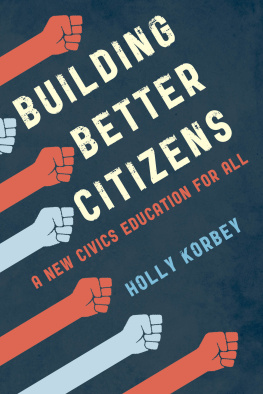

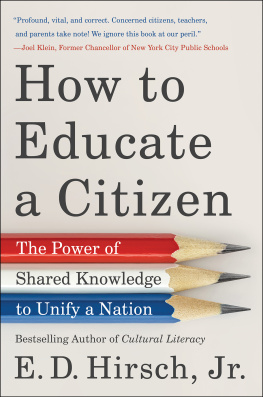
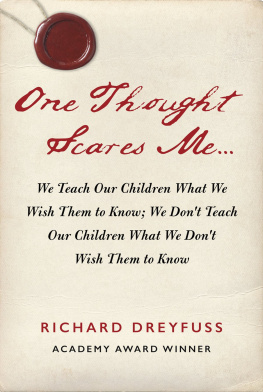
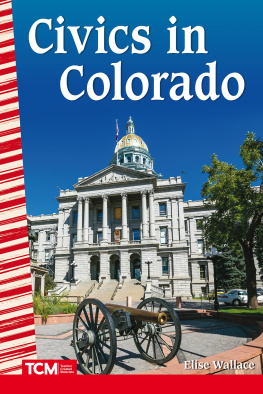
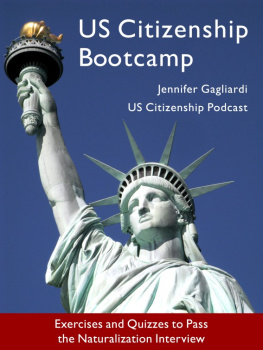
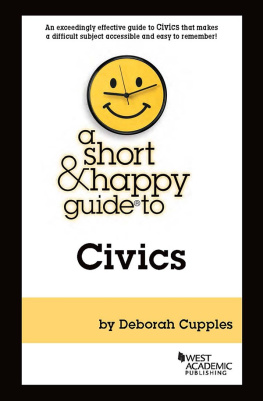
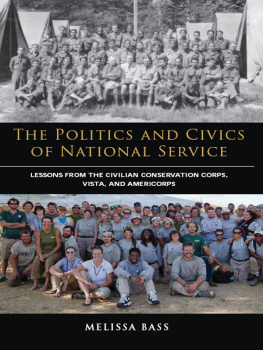


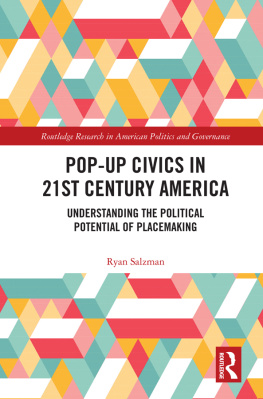
 TM The paper used in this publication meets the minimum requirements of American National Standard for Information Sciences Permanence of Paper for Printed Library Materials, ANSI/NISO Z39.48-1992.
TM The paper used in this publication meets the minimum requirements of American National Standard for Information Sciences Permanence of Paper for Printed Library Materials, ANSI/NISO Z39.48-1992.